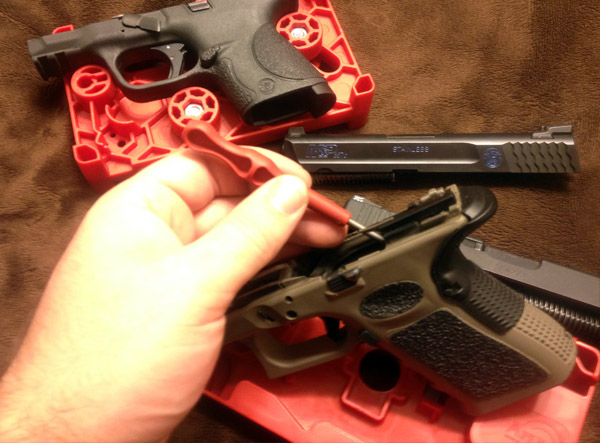I'm about to share with you one of the most useful tools in my gun drawer. I'm almost certain that unless you already have some sort of trick or technique for mounting an optic squarely level to a firearm, you'll want to pick up one of these for yourself after reading this review.
The EXD Engineering Vertical Reticle Instrument is an adjustable, self-aligning tool that uses V-blocks to square up the scope's objective bell with the barrel, assuming your scope rings are quality and in spec. Once you tighten down the thumb screw to secure the V-blocks (you can use a rubber band to keep it in place if needed) you can use the bubble level to assure the rifle/shotgun/muzzleloader/pistol is resting level with the planet. Then, with the rings loosely tightened so you can rotate the scope in place, you want to look through the glass and make sure the crosshairs themselves are parallel with something thats level - a door frame, a fence post, or a plumb line that uses gravity to create a straight vertical reference. If the reticle is vertically squared and the bubble level in the EXD instrument is between the marks, your scope is aligned with the universe and you can tighten down your rings.
Now I have managed to mount optics on quite a few firearms without the use of such a tool, but the possibility of being skewed and non-level with the bore has always haunted me. Once I'd get the rings slightly tightened and the eye relief in the sweet spot, I'd either take a step back and fiddle with the magnification so I can catch a glimpse of the reticle in the narrow eye-box and just sorta get a feel if it looks square to the action, then double check by scoping something outdoors that I'm relatively sure has straight vertical edge. If the scope had a nice capped elevation turret I would balance an actual level tool on it, but that only would tell me the scope was level with the ground, not level with bore itself. I could spend and hour tinkering with it until it looks right, and it could still be way off.
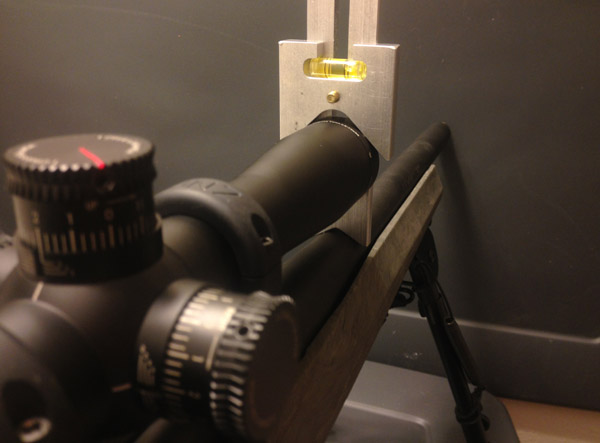
For shooting 100-200 yards it may not be worth a second thought, but for ultimate precision especially at longer ranges, a canted crosshair reticle can and will have adverse effects on your scope's windage and elevation adjustments. Many gun stores, smiths, or scope dealers will mount a scope fore you, but really only "eyeball" it or use a reference that may not be all that precise. Hell, I've had someone tell me to just close my eyes, shoulder the rifle, and then whatever canted position the rifle is in my hands is good enough, then half-ass level the windage line and tighten the rings from there. This may be "good enough" for Bubba to bag a backyard buck, but not if you hope to be consistent with your firearm's optic at various ranges.
Yes, there might be some OCD tied into it, but a scope that you've leveled yourself, without paying someone else, really gives you reassurance as well as confidence in your rig (or in some cases, gives you less excuses at the firing line). The beauty is that this tool is so simple, it should work with virtually every firearm you want to mount a scope on, with only a few exceptions. I would strongly recommend buying the EXD Engineering Vertical Reticle Instrument, especially if you own multiple scopes and like to swap them around, or if you're business includes mounting optics for customers.
Firearms Insider Reviews – 8 Key Points
Claim to Fame: Makes zeroing your scope faster and far more accurate
Target Market: Scoped Rifle Owners
FNBs (Features & Benefits of this product):
- Self Align V-blocks
- Thumb Screw for tightening
- View Slot
- Bubble level to ensure scope and bore are square during mounting
What other aesthetic options or finishes are available?: Unfinished Aluminium only
What others are saying?:
"I have mounted numerous rifle scopes and this is the best device for leveling the cross hairs I have found. Actually, it's used to level the rifle and scope, and then plumb the vertical reticle of the scope." Brownells.com User Review
"This tool changes weather a scope is level or not from an opinion to a fact. It's the best tool out there for leveling a scope. On some high power scopes the narrow window can be an issue but it still works." Brownells.com User Review
"This tool is indispensable for quick accurate perfectly level crosshairs. No more excess time fidling with back and forth alignment. If your in the profession you absolutely need this tool, its a money maker." Brownells.com User Review
Price point:
I need it now! Availability: Available at Brownells.com
Our Rating:
Pros:
- Removes the guesswork from mounting a scope and zeroing the reticle
- Works with almost every firearm platform as long as the scope overlaps a round barrel
- Compatible with Oval ocular scopes
- Should work with optics on handguns, muzzleloaders, shotguns, as well as rifles.
Cons:
- Barrels with rear iron sights may not work with this tool
- Leveling the reticle perpendicular requires an outside reference ie: a door frame or plumb line
- Expensive for what it is...would have been a great additional value if some sort of black string, thumbtack and weight were included
Score: 8.0 Great
Featured FFL:
For FFL services I choose Promised Land Firearms in Toulon, IL.
Ryan's Links:
Gun & Gear Review Podcast
Hunter of Design


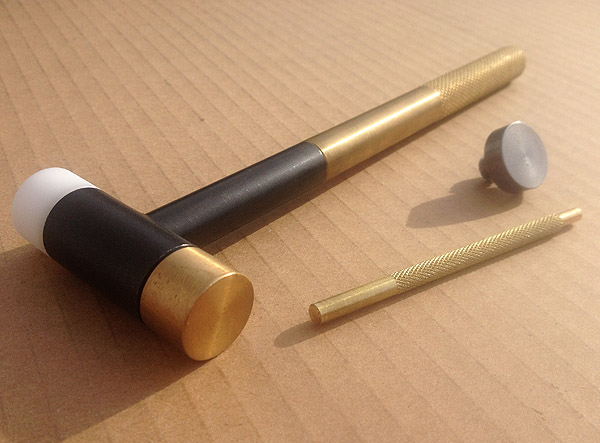

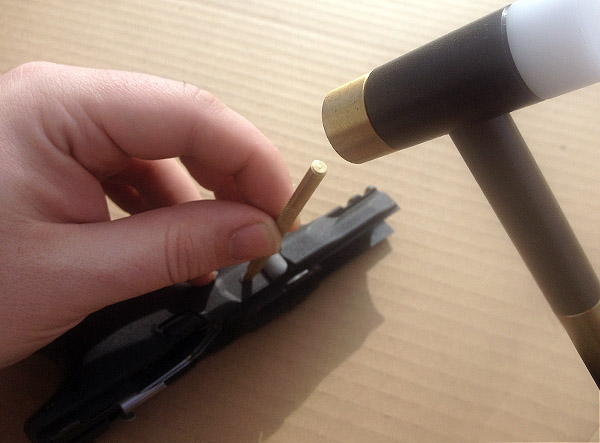
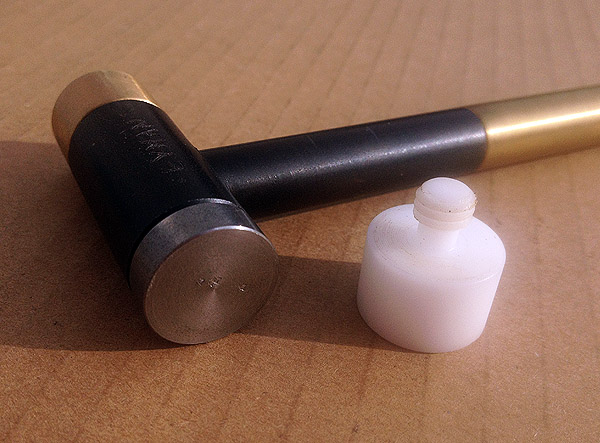
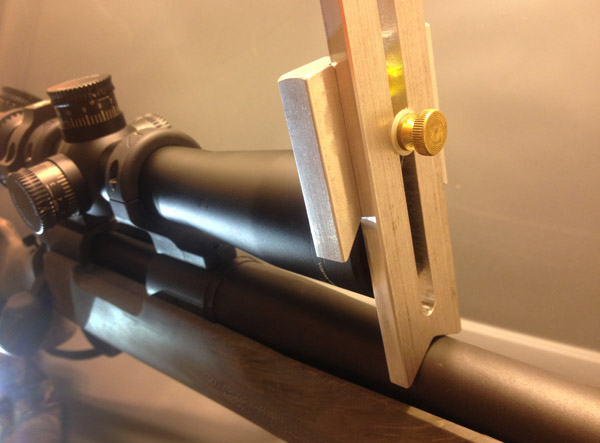



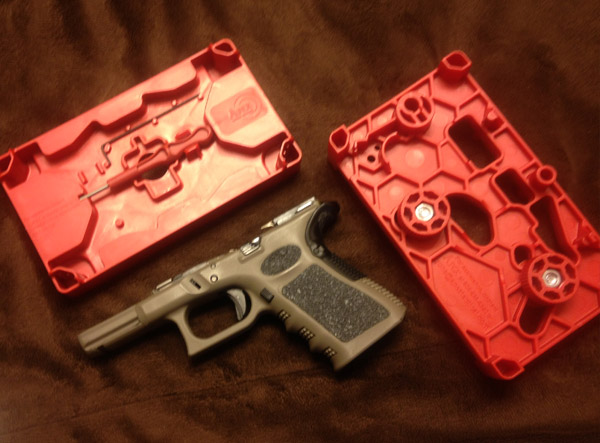 Claim to Fame: The Apex Polymer Armorer's Block and Tooling Plate provide a raised surface for you to work on your M&P and Glock Pistols.
Claim to Fame: The Apex Polymer Armorer's Block and Tooling Plate provide a raised surface for you to work on your M&P and Glock Pistols.